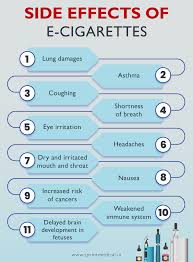
Pushing open the door of the high school girls’ bathroom, it isn’t until I’ve taken my first few steps inside that the smell hits me. At first, I thought something was burning, like the smell of a curling iron plugged into an outlet that hadn’t been used in a long time. There’s only one outlet in the bathroom, it’s empty… Taking another deep breath, the smell of artificial fruit becomes more clear. I chose to ignore it. Walking towards the closest open stall, I see two pairs of shoes in the stalls next to me. I can hear their periodic exhales, slower and louder than the rest of their breaths. The smell becomes more potent with each breath out.
1 in 20 Americans vape, and the teenage consumption rate has gone up by 1,800% in 2023. Vaping in adolescence can be far more harmful to your brain than vaping as an adult. Throughout your childhood, teenage, and even early twenties your brain is still being developed, and will continue to do so until you turn 25 years old. Using a vape, which contains nicotine, can hurt the parts of your brain that control attention, learning, mood, and impulse control. Nicotine can also affect the way your brain learns skills and collects memories. Synapses are formed between brain cells when you learn new skills and make memories. Nicotine affects the way these synapses are formed and, therefore affects some of the most important parts of your brain as you grow.
Using a vape often causes a dangerous cycle of addiction and can change the course of someone’s teenage years, or even their life. If you use a vape regularly and then stop suddenly, it forces your brain and body to get used to not having nicotine, which can cause symptoms of nicotine withdrawal. Irritability, restlessness, anxiety, depression, issues with sleep, trouble concentrating, and craving nicotine are all symptoms of nicotine withdrawal. Oftentimes, these indicators cause the user to continue using a vape to keep them at bay. Teens often start vaping as a result of depression and anxiety, as a result, they create a cycle of dependence for themselves, as nicotine can be a large source of stress. The most likely reason that middle and high schoolers start vaping is because a friend gave it to them, while the most common reason that they would continue to use vapes is that they are feeling stressed or depressed. While scientists are still trying to find the source of the relationship between vaping and mental health, it isn’t hard to see that quitting vaping lowers feelings of anxiety and depression and can contribute to improving quality of life.
Scientists are also still trying to figure out the long-term effects of vaping. It’s known that some of the ingredients in e-cigarettes can have long-term effects on the lungs. A common example is that some of the ingredients in the aerosol are safe to eat, but not to inhale, as the stomach can break things down that the lungs cannot. There are also reports of defective batteries in e-cigarettes causing fires and explosions, some of which have caused serious injuries. Both children and adults have also been poisoned by eating, inhaling, and absorbing vape liquid through the skin and eyes. Reportedly, about 50% of calls to poison control centers regarding vapes are for children 5 years of age or younger. People often believe that secondhand smoke from vapes is just ‘water vapor’, but that isn’t true at all. Chemicals like Nicotine, Ultrafine particles, Diacetyl, Benzene (a chemical found in car exhaust), and several more are found in secondhand smoke from vapes. While not always possible, it’s best to stay away from it.
Several different diseases have been proven to be a direct cause of e-cigarettes. Popcorn lung (bronchiolitis obliterans) is one of them. Caused by diacetyl, an addictive flavoring that gives microwave popcorn its buttery flavor. Diacetyl is also found in vapes to help enhance the taste. There is no lasting treatment, and it often causes coughing, wheezing, shortness of breath, and chest pains. Lipoid Pneumonia is another disease caused by vaping. It happens when people inhale oily substances found in vapes, which sparks an inflammatory reaction in the lungs. Primary spontaneous pneumothorax, also known as a collapsed lung, happens when there is a hole in the lung from which air escapes. It can be a result of injury like a gunshot or stab wound, or when air bubbles up and blisters at the top of your lungs and create small tears. Tall thin people are usually the ones who get a collapsed lung as a result of vaping, as they have a faster growth there are points where weak spots can form and blister. There aren’t any symptoms until the blisters burst, which can happen easily when vaping. Of course, the telltale disease that people believe is caused by vaping is cancer. In all reality, e-cigarettes haven’t been around long enough for science to prove that cancer is a direct result of vaping.
The marketing behind vapes is also harmful, especially to teenagers. Statistics say that almost 90% of youth who use vapes use a flavored variety. The most common flavors are fruit (63%), candy and other sweets (35%), mint (28%), and menthol (20%). The amount of sweet or ‘childish’ flavors being advertised is enough to make you question whether or not businesses are trying to sell vapes to adults, or are they targeting impressional children? Several vape-related products advertise not containing any nicotine, yet studies have shown that even these products that have ‘0%’ nicotine, do indeed contain some. The FDA has put several policies in place to try and keep companies from selling copious amounts of ‘youth-appealing’ flavors. Of which one was prohibiting them from selling any pre-fill cartridges with any flavor other than tobacco and menthol.
Some studies have found that the use of e-cigarettes contributes to the likelihood of smoking or doing drugs in the future. Considering that vapes can be used to deliver other drugs, almost one-third of teenagers who use a vape have reported using marijuana in it.
There are countless other effects of vaping that ruin your well-being and lead to further bad decisions. Teenagers especially, who are persuadable, are at the highest risk not only of vaping but of some of the worst results of vaping. Keeping our schools, bathrooms, shops, and businesses clean of harmful chemicals is detrimental to our future generations to continue living the best quality of life that we have set up for them and ourselves. Respect your body and others’.
Works Cited
Centers for Disease Control and Prevention. “Quick Facts on the Risks of E-cigarettes for Young People.” Centers for Disease Control and Prevention, https://www.cdc.gov/tobacco/basic_information/e-cigarettes/Quick-Facts-on-the-Risks-of-E-cigarettes-for-Kids-Teens-and-Young-Adults.html. Accessed 26 March 2024.
Hopkins medicine. “What Does Vaping Do to Your Lungs?” Johns Hopkins Medicine, https://www.hopkinsmedicine.org/health/wellness-and-prevention/what-does-vaping-do-to-your-lungs. Accessed 26 March 2024.
zauderer, steven. “49 Vaping Statistics (How Many People Vape?).” Cross River Therapy, 19 september 2023, https://www.crossrivertherapy.com/vaping-statistics. Accessed 26 March 2024.












